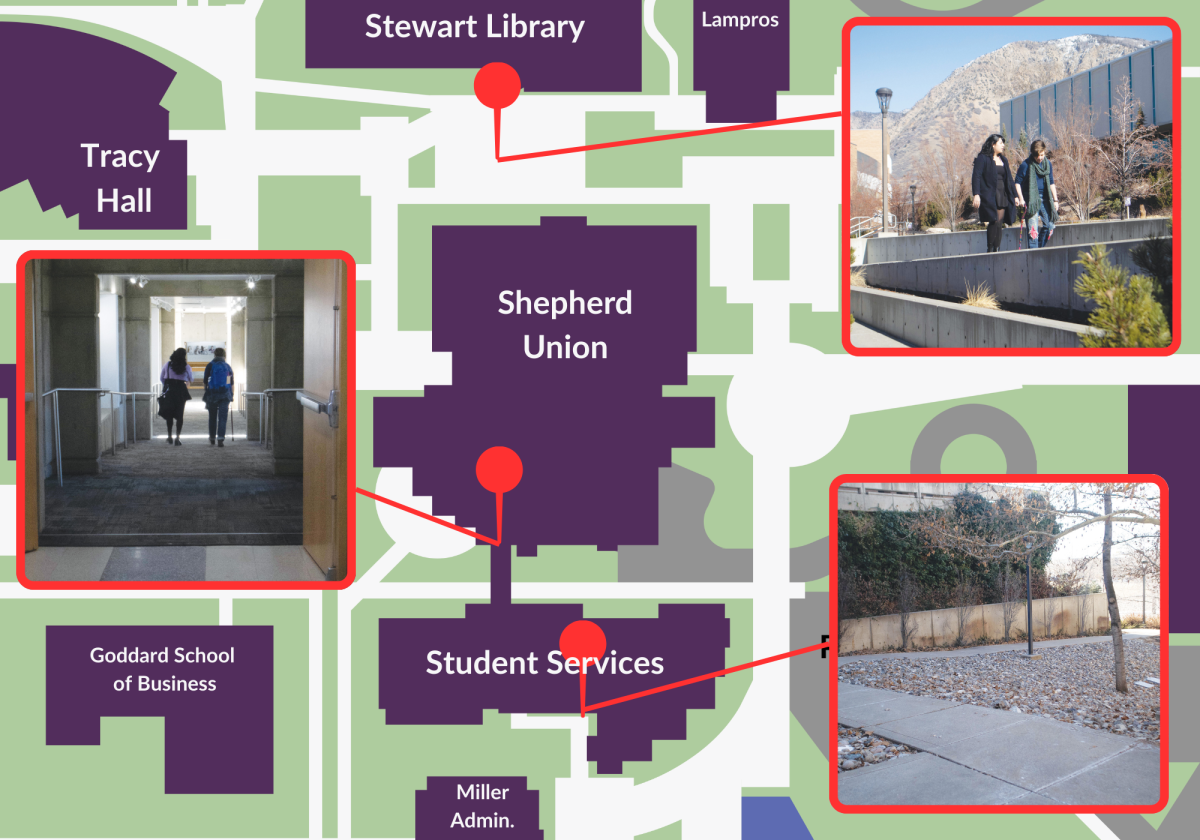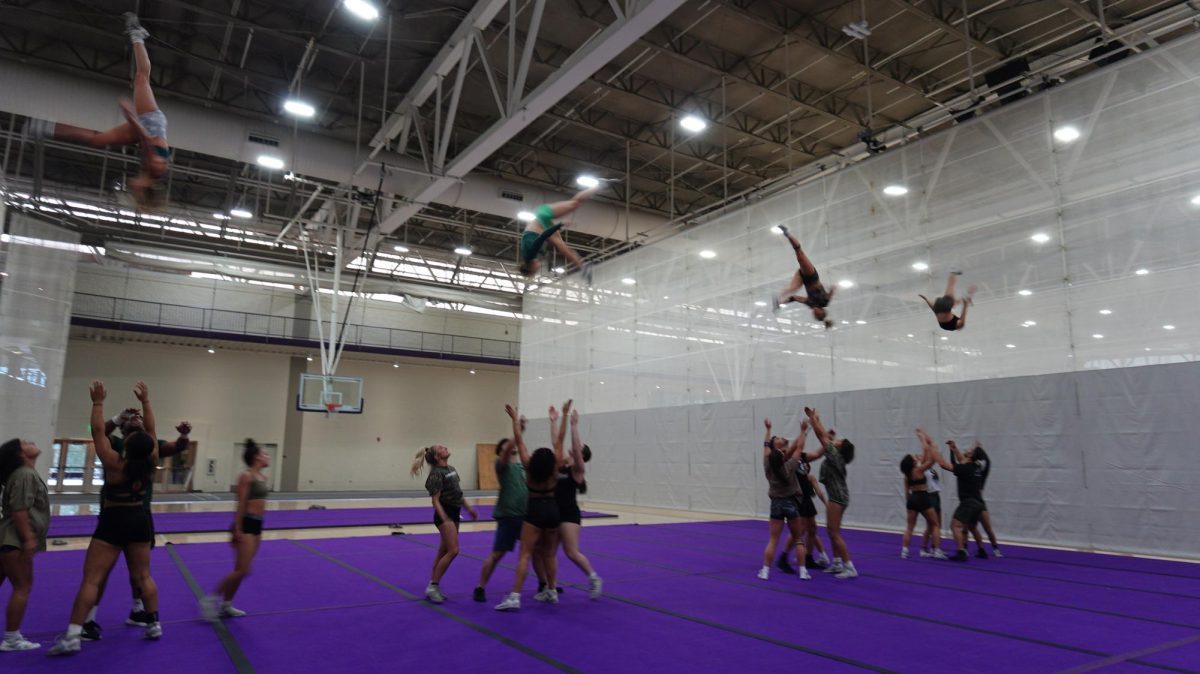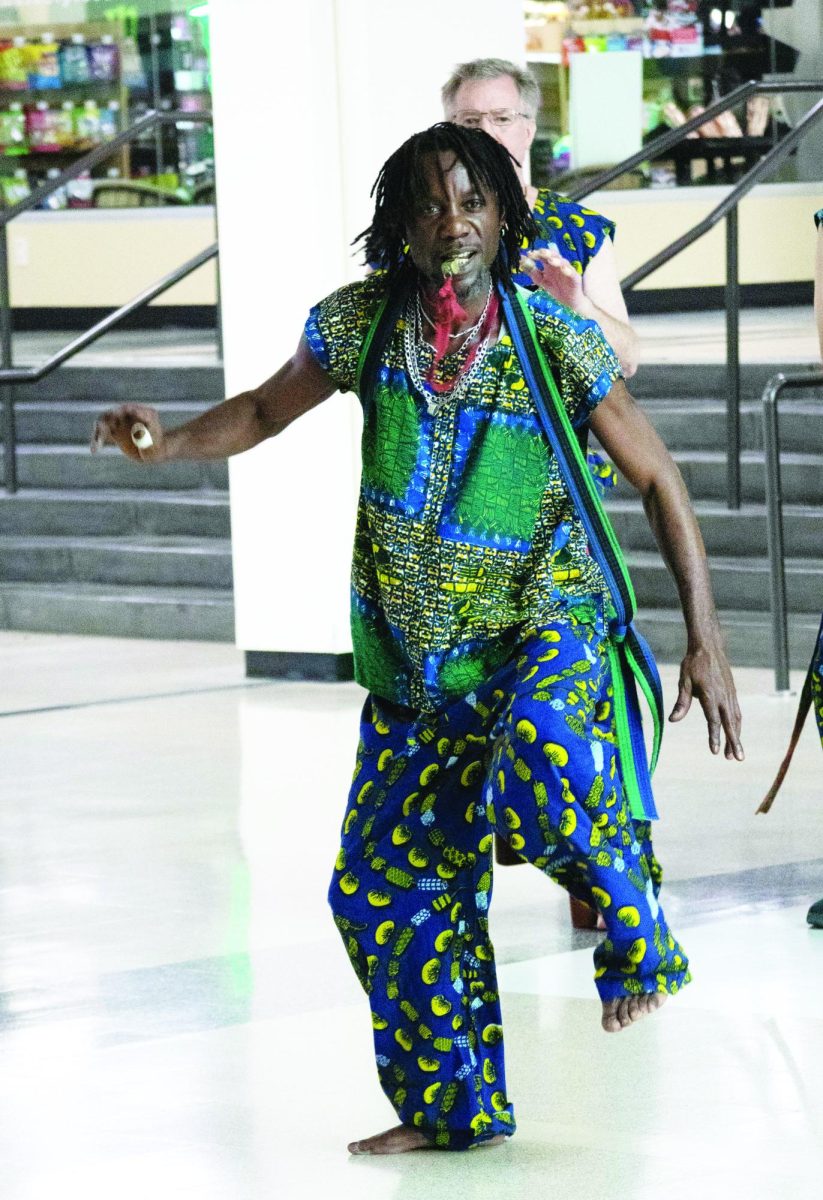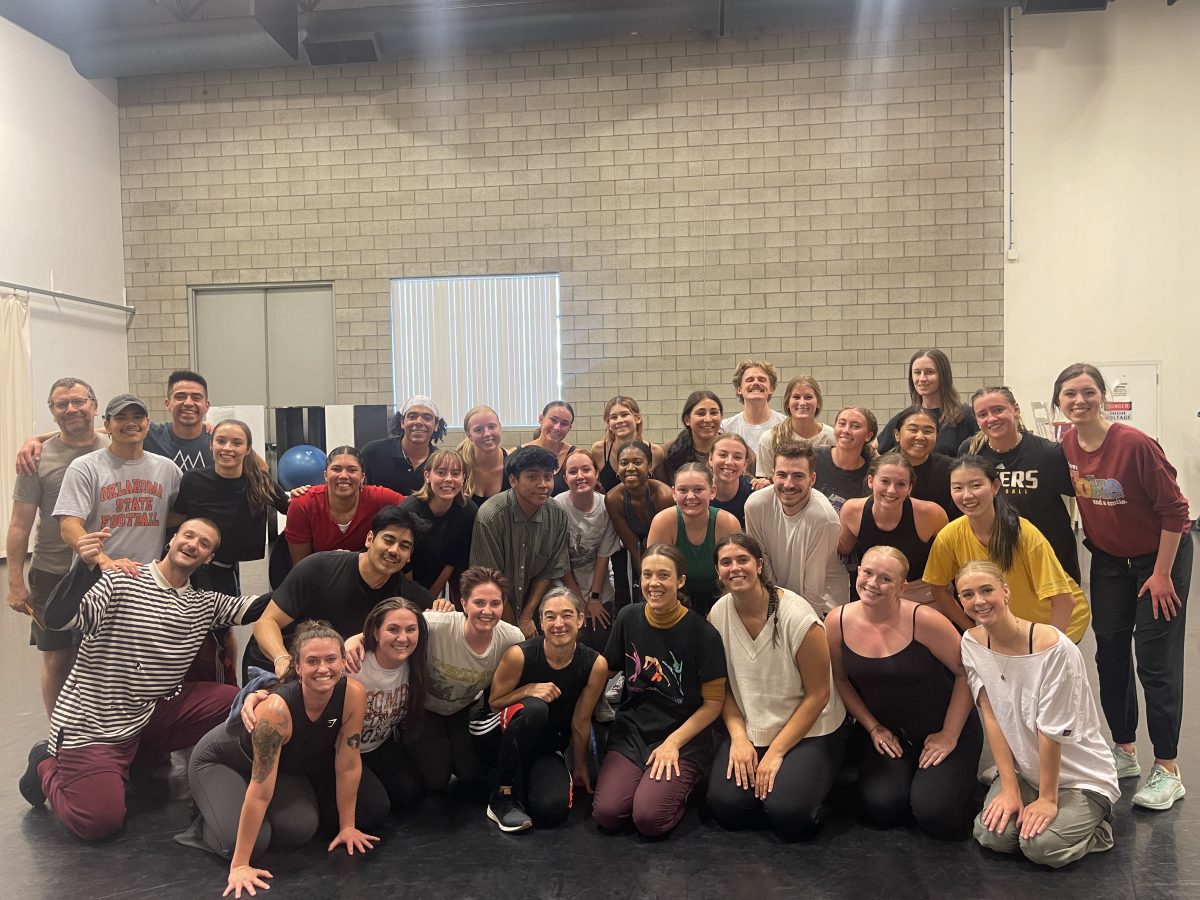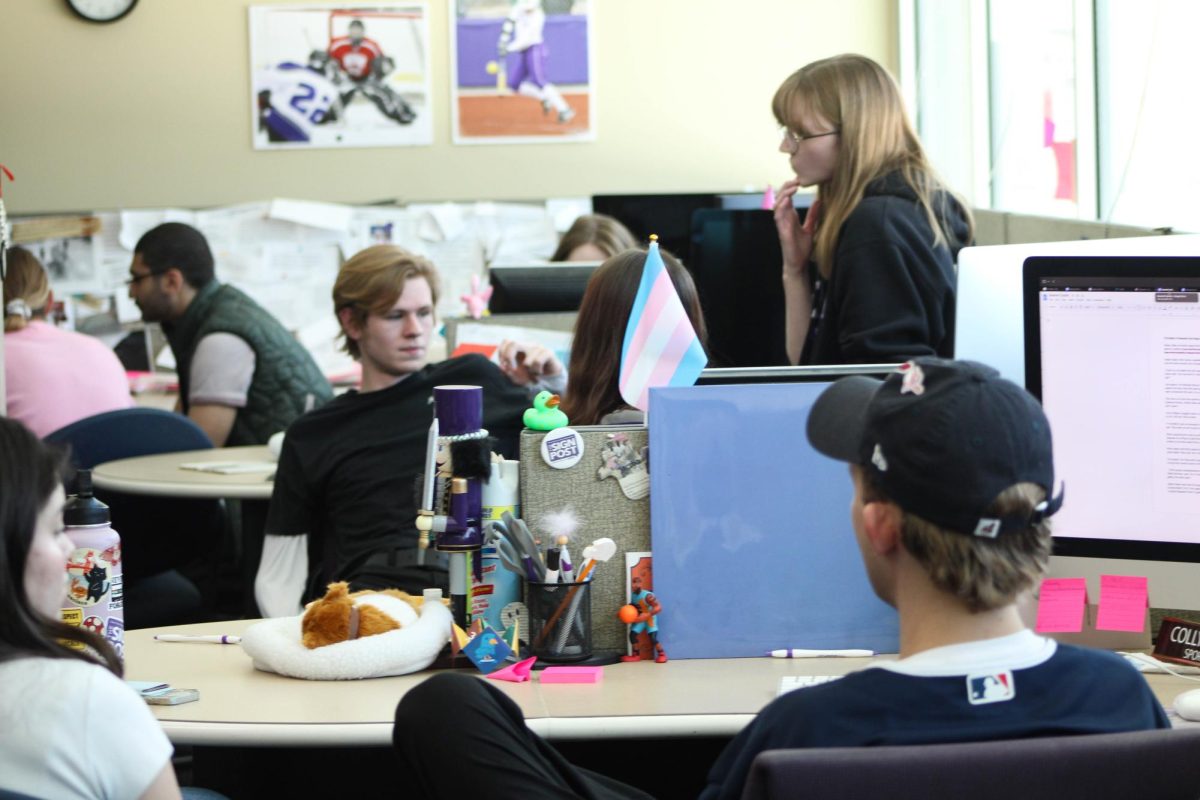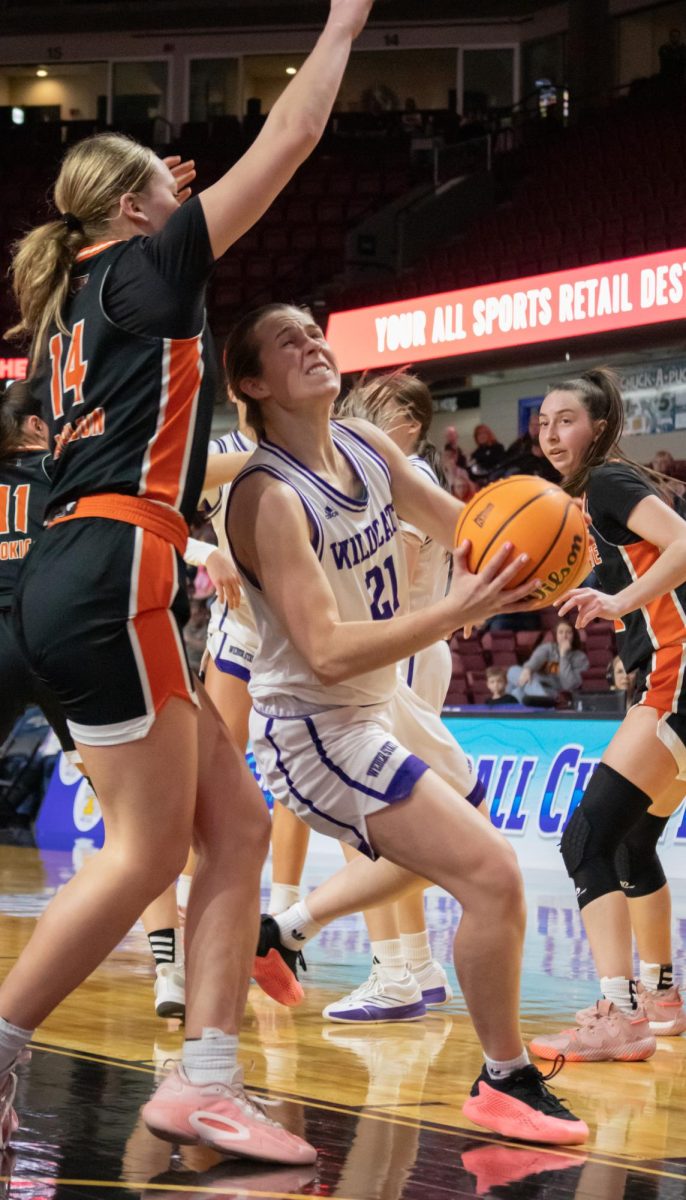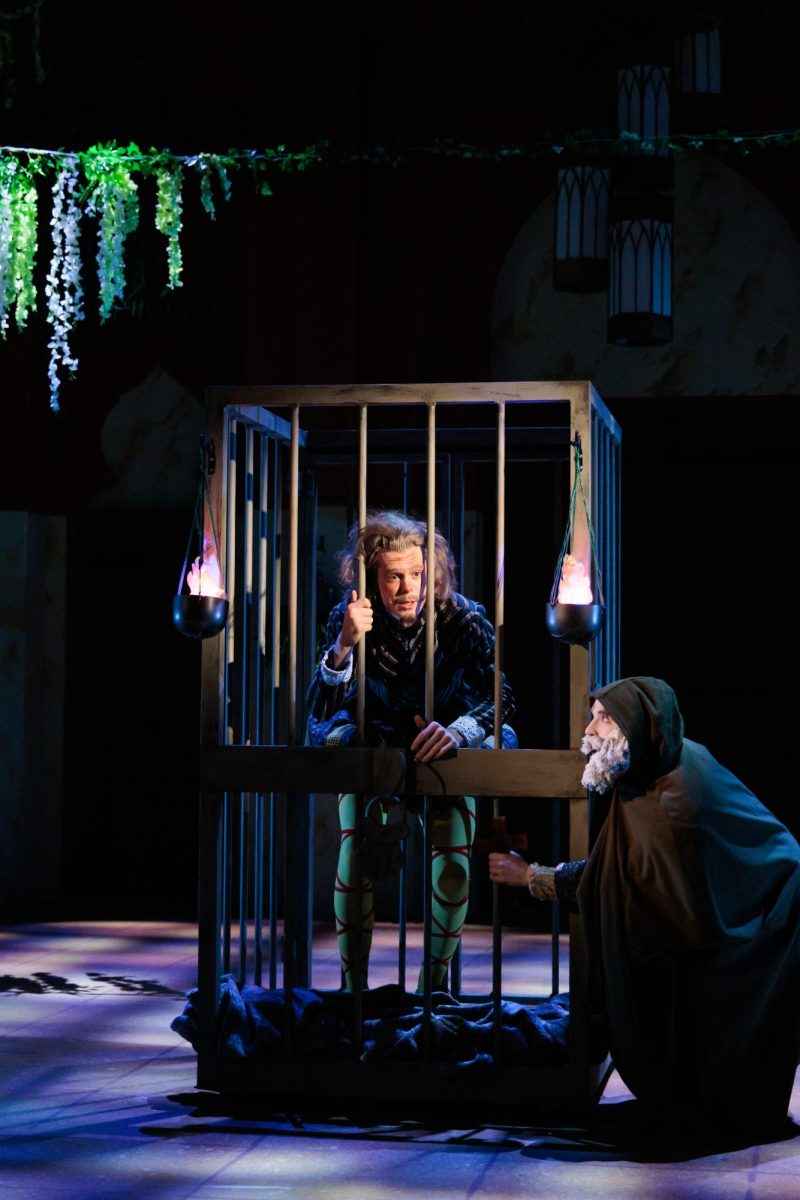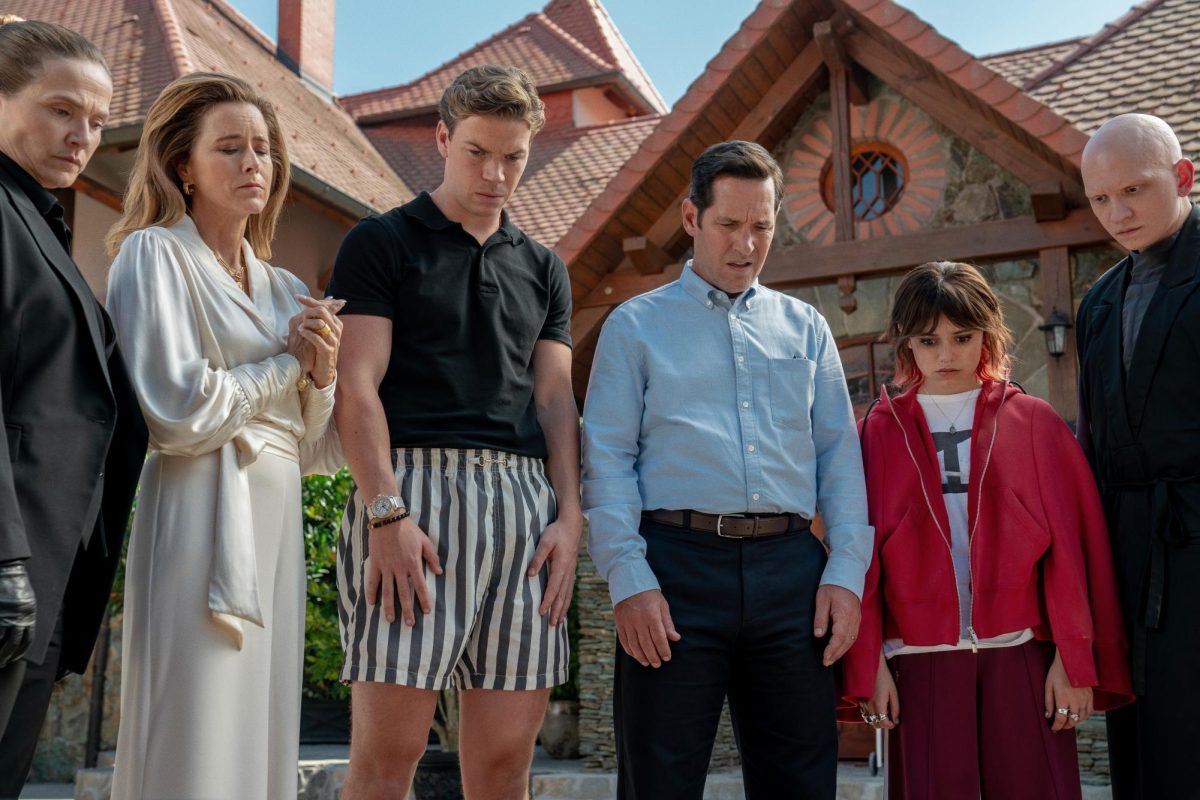After a full summer of construction and renovation, The Val A. Browning Center for the Performing Arts will be ready to present with its own new features and upgrades this fall.

The first renovations are in the Austad Auditorium and Allred Theater, which both received new sound-system upgrades. This was especially significant in the Austad, where every seat was analyzed to perfect an even sound level across the audience. Jenny Kokai, chair of the Department of Performing Arts, said this new system was sorely needed.
“The old sound system created a hole in rows three through five, which should be good seats, and they couldn’t hear anything and that drove us mad,” Kokai said.
The Allred Theater is also under construction to receive a new stage floor and orchestra pit cover.
Jim Craig, director of the Browning Center, described the new main performance floor as a “sprung floor,” which is soft enough to protect dancers and other performers from injury. He then described that the softer floor gradually becomes stiffer towards the edges so that the stage can still support heavy equipment.

“While the audience won’t notice a difference, this floor will be much safer for our performers, particularly for dance,” Kokai said.
Craig said the orchestra pit has also been re-engineered so that the removable panels are also strong enough to support heavy equipment, such as personnel lifts. The 21 removable panels, called “traps,” allow the stage to be changed according to performance needs, such as a small opening for a lower stage level, or removing all of the panels to house a live orchestra.
Craig said the stage renovations should be completed by Sept. 17.
The next big addition for The Browning Center is a state-of-the-art sound recording studio being built on the first floor. Craig said this project has been in the works for about three or more years.

“It seems like, maybe two and a half years ago, the stars aligned,” Mark Maxson, director of the Sound Production and Recording program, said. “We had a space, a donor and a dean who was super ready to commit to building a world-class recording space.”
Maxson described how, when a recording studio in Salt Lake City, HUGE Studios went out of business a few years ago, the dean of the Lindquist College of Arts and Humanities at the time, Scott Sprenger, arranged to buy almost all of the studio’s high-quality studio equipment at a great price.
The newly-acquired Neve studio console went into a small lab in the Browning Center for the time being, but the department otherwise had all of this new equipment with nowhere to put it. Maxson said that’s when donors came forward to fund the construction of a new, professional recording studio.

Craig said the studio, which was designed by Peter Grueneisen of studio bau:ton and nonzero\architecture, is scheduled to be finished around Sept. 15. It’ll then take a week or more to install all of the equipment, and the studio will be ready to open sometime in October. Its official name will be The Ray L. Kimber Music and Sound Recording Studio, named after the donor.
“We are really excited about the recording studio and the sound production and recording program,” Craig said. “This will give Weber State students the opportunity to work with tools that are second to none.”
While the whole of the performing arts department is excited for the new studio addition, it will be especially influential for students of the new Sound Production/Recording minor and associate degree.

Students in these programs learn how to professionally record and edit audio and how to use sound equipment and software, as well as how to manage time and work with other people in ways that can prepare them to be future recording engineers or studio owners and managers.
Callie Oyama, a communication grad student who recently minored in Sound Production/Recording, said the program can be interesting and useful for many different degrees, not just those students studying music. For her, it helped diversify her knowledge of different digital audio workstation programs and understand better the production process when she was working an internship at a TV station.
Maxson said the workstations, isolation booth and upstairs lab the students have had to work with the last couple of years have gotten them by, but this new studio will change the game.

“To have a real studio with a real control and a real recording area that is divided and the whole room is completely soundproofed — that’s the next level,” Maxson said. “Our students are going to be in a world-class facility.”
Maxson said this will also allow them to bring in outside musicians for the students to gain real-world experiences working with people they don’t know in a real recording studio setting.
“We’re going to have an environment that will be the real world,” Maxson said. “It will not be a typical classroom. We’ll have class, but when you walk in there you’ll go, ‘Wow. This is a studio.’”
Oyama said having this studio would’ve been helpful to her for interactive learning, especially in one class she took where they learned about how to build a studio.
“I think I would have had a first look experience into actually understanding what a studio is supposed to be instead of just reading about in a textbook or just, like, looking at pictures online,” Oyama said.

Weston Larsen, who previously graduated with a Bachelor of Arts degree in music in 2013, is now a current student of the Sound Production/Recording associate degree, set to graduate in spring 2022. With a passion for composing and writing music and hopes to eventually work in a recording studio, or even open his own where he can apply some of his ideas, he said this new studio feels like the important missing “piece of the puzzle.”
“I think this should have happened a long time ago,” Larsen said. “I feel like recording is becoming more important as we get more and more into technology and being able to stream, broadcast, and record music and video… but better late than never.”

These new studio renovations come with a second phase that will eventually enable the recording of music and events in every performance space in the Browning Center remotely from the recording studio.
Craig said completion of this last project depends on raising additional funding due to the greatly increased prices of building materials during the pandemic. These supply issues and raised prices have impacted all of the Browning Center renovations, which were originally supposed to be finished during the summer of 2021.

On top of the construction inside, Bus Rapid Transit construction outside of the Browning Center has also been a little frustrating to some. Kokai said while she’s excited for the access from downtown Ogden the BRT will provide, enduring the construction has been rough.
“There was a point this summer where our parking lot was gone, the front entrance was gone and none of us were sure how to get in the building,” Kokai said.
Once all is completed, though, the renovations will provide the needed enhancement for future performances.

“A performing arts center is more than a building,” Craig said. “It’s a giant machine that allows us to support the fantastic performances we present.”
The Browning Center was built in 1964 and dedicated in 1965. Since then, it has undergone several renovations, including the addition of the Allred Theater in 1966 and replacement of the Austad stage floor in 1985. The last major remodeling was started in 1997 and finished in 1999.








